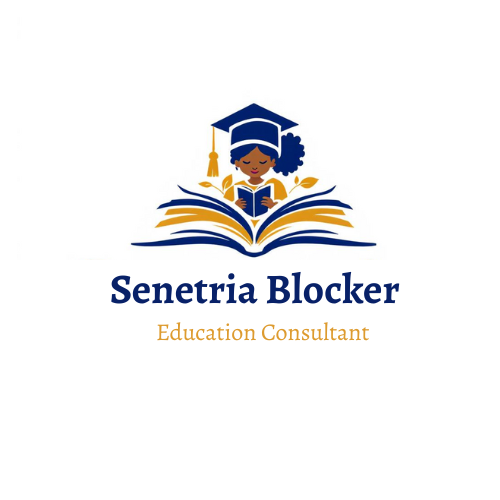Let’s Give Them Something To Write About; Strategies that Get Students Writing (part 2)
Part two of Let’s Give Them Something to Write About; Strategies that Get Students Writing will focus on strategies that support and encourage writing in the following areas: pre-teaching vocabulary, creating word walls and word banks, questioning, reading aloud, and exit tickets.
Pre-teaching vocabulary involves teaching students the meanings of words they will encounter before reading a text or participating in a learning activity. For example, when teaching students about a historical event, students could participate in a short discussion on the event. During this discussion, the learning might include critical terms, tier three vocabulary (Tier three words are content-specific words that are used less frequently.), and names of people, or places where the event took place. The expectation is that by understanding these words upfront, students will have greater confidence and better comprehension when they hear, read and write about the text.
Another pre-teaching vocabulary strategy is using visual supports such as pictures and graphics to pre-teach vocabulary. When teaching students parts of a bee a teacher might display a label graphic and review key terms before reading a nonfiction text. Connections to words such as tongue and abdomen can be made by having students point to those parts of their bodies. Vocabulary words such as antennas and wings can be connected to other insects with these body parts. Words like thorax and mandibles might be tier three words that require explicit instruction. Exposing students to vocabulary in advance reduces the number of unfamiliar words they encounter and increases comprehension when reading. Enhanced comprehension of text will aid students' writing. Other ways to pre-teach vocabulary include using gestures, showing real-world objects, role-playing, and drawing pictures that represent the words.
After identifying the words to be pre-taught, don’t just put those words to the side. Use them to create word banks or word walls that students can use to enhance their writing. A word bank is a collection of words that relates to the content or material students learn. These banks can be at the tops of writing pages, in writing centers, or on separate documents. When creating a word wall, words are placed on a wall in a structured format. Word walls might include pictures or illustrations of the words or short definitions to help students familiarize themselves with the new vocabulary. When students write, they can use the words to make their writing more meaningful, paint a clearer picture of the subject, and spell words correctly.
One example of using word banks to support writing comes from one of my mentee’s classrooms. Before students read the book, Two Bear Cubs by Robert D. San Souci, Ms. Hicks pre-taught vocabulary such as Mother Grizzly, downriver, and strange. She placed the words in a word bank, and students used those words to write a contrast and contradiction essay. Below is the first draft of a student’s writing.
Consider reading aloud picture books to build students’ background knowledge leading to more academic writing. Listening to read aloud will help students develop interest and increase their awareness. The Undefeated by Kwame Alexander is an excellent poetry text with rich vocabulary. Students would benefit from learning tier three words or other challenging vocabularies before listening to the text read aloud. Using this picture book to develop students’ understanding of the accomplishments of African Americans such as Martin Luther King, Jr., Langston Hughes, Gwendolyn Brooks, and others can be a starting point for writing essays, expository, descriptive, persuasive, or narrative writing. By pre-teaching unfamiliar words such as undeniable, sophisticated, adversity, audacious, imperfect, righteous, and survived; students are better able to connect with the text. Picture books like The Undefeated could be an introduction to a unit of study. Students could write about people in the text, their accomplishments, or write questions they have about the text. Researching the answers to their questions is a great way to get students writing.
Answering critical questions about videos, readings, experiments, etc., is another way to get students writing. Critical questions, exploratory questions that do not have a single definitive answer such as What did you notice? or What do you wonder?, give students a chance to both think about new learning and improve writing skills. Writing in a double-entry journal (A two-column journal with the left column being a critical question, a quotation, or a concept, that students want to expand upon or understand better. On the right side of the journal students or the teacher answers questions or reflection on the quote or concept.) or reflective writing both offer students a chance to write.
Exit Tickets can be significant short writing assignments. Exit tickets are a formative assessment tool used to evaluate students’ understanding of the material learned. They provide an opportunity for students to reflect on their learning and give educators a way to assess students’ learning. These assessments can help teachers plan future lessons accurately. They also identify any areas that require re-teaching.
The primary purpose of an exit ticket is to evaluate students’ learning. Exit tickets could require students to answer a critical question, summarize text, write a sentence summarizing a movie or short film, complete a one-sentence story, write a reflection on learning or ask any remaining questions students have on a subject. Exit tickets provide information to the teacher as to whether they taught the material properly, in a way students were able to master the objective. Beyond being an evaluation tool, exit tickets can provide more writing practice and help students explore ideas. Teachers can also use exit tickets to review writing conventions and grammar.
These strategies: pre-teaching vocabulary, creating word walls and word banks, questioning, reading aloud, and exit tickets are all great ways to get students to participate in meaningful and authentic writing activities. With a few added supports, students will improve their writing growth in a measurable way.








